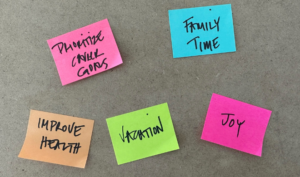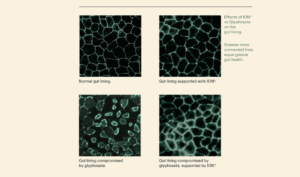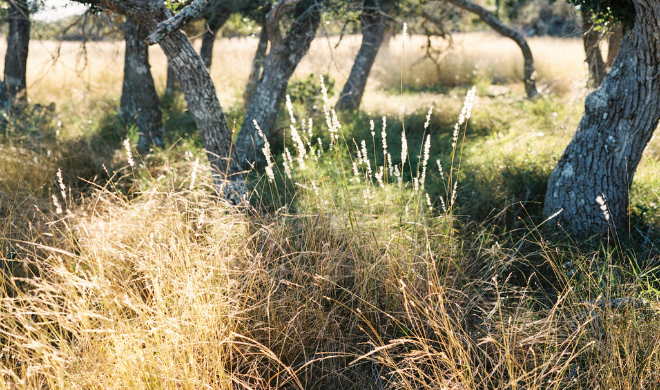Maybe you’re like me, and there is a tower of books on your nightstand (and coffee table, and desk). Lately, many of the books I’m surrounding myself with have the same goal in mind: to better know and understand the natural world around me, so that I might do my part in protecting it.
Today I thought I’d share some of my favorite books that have ignited my own curiosity and interest. Some of these center on regenerative agriculture specifically which I’ve written a little bit about here, and some are more broad stories of the environment. Of course, none of these have all the answers on their own, but they do all help in keeping the conversation alive.

To Better Know Your World:
There has been a small, electric orangish-red bird visiting my fence line nearly every day. After repeated visits, I was finally able to find this guy in my bird book and put a name to: A vermillion flycatcher. Since knowing his name, I’ve begun to spend more and more time watching this bird and his distinct bobbing flight path through the air where he rids the skies of pesky mosquitoes. Just knowing his name has brought me closer to this bird.
What are the birds that surround you? What grasses are native to your ecoregion, and what would it look like to replace some of your non-native turf grass with the plant species that have co-evolved with the birds and bugs of your neighborhood? Did you know that if you and your neighbors designated a portion of your yard to native plant species to create a mirco-prairie, you can create a patchwork of ecology? This simulates the meadow ecosystem that existed before any development came along. In other words – even doing a little, can do a lot.
Prairie Up: An Introduction to Natural Garden Design by Benjamin Vogt
Grasses of the Texas Hill Country by Shirley and Brian Loflin (This has been my go-to while rewilding my land. If you’re not in Central Texas, I’d find one in your area!).
Kaufman Field Guide to Birds of North America by Kenn Kauffman
Food Systems - Regenerative Agriculture
Did you know that livestock production, when done using regenerative methods, can actually help to restore ecosystems and sequester carbon? Yes – you read that right… eating meat produced using regenerative methods can actually be good for the environment. Under these circumstances, herds of livestock are actually contributing to the organic matter of the soil where they’re raised. They’re frequently rotated on synthetic-free pastures which, in turn, are rested, minimally disturbed, and allowed to return to a holistic and biologically diverse pasture system. Regenerative agriculture, in essence, differs from more conventional systems in that it’s not extractive – you’re not mining the minerals and biological material (aka grass) from the soil with no plans to replace it. Instead, emphasis is placed on the health of the soil, and livestock are mere tools to improve the overall system.
The term “regenerative” is somewhat new. There are likely plenty of responsible farmers and ranchers in your area producing food in a way that is beneficial to the animals and the environment. Unlike the USDA Organic Label, there isn’t yet a widely adopted certification body that ensures that producers are actually doing what they claim. The best way to ensure you’re eating meat that is actually good for the environment? Get to know the farmer! Go to your local market or do a bit of online research.
For a deep dive into the subject and to learn more:
For the Love of Soil: Strategies to Regenerate Our Food Production Systems by Nicole Masters
Cows Save the Planet by Judith D. Schwartz
Growing a Revolution: Bringing Soil Back to Life by David R. Montgomery
To Light a Fire and Inspire
The book Silent Spring by biologist and nature writer Rachel Carson was published in 1962. I read this book in high school. This book is famous for awakening a national consciousness and spurring revolutionary changes in laws to better protect our air, land, and water. This was the first book that opened my eyes to the proclivity of toxic chemicals in our modern world, and had me question for the first time the clouds of crop dusters that often hung in my childhood sky. When I became an esthetician at 18, this book made me wonder about the ingredients in skincare products, setting the stage for my lifelong commitment to clean beauty.
The other book that imprinted on me as a young adult? The One Straw Revolution was published in 1975. Despite its age, the principles in this book hold true. Work with nature, rather than against it. My latest read in this realm is the 2013 book Braiding Sweetgrass by Robin Wall Kimmerer. I absolutely adored this book which talks about the role of Indigenous knowledge as an alternative or a complementary approach to mainstream scientific methodologies.
Silent Spring by Rachel Carson
Braiding Sweetgrass by Robin Wall Kimmerer
The One-Straw Revolution by Masanobu Fukuoka
Pastoral Song: A Farmer’s Journey by James Rebank
The Unsettling of America by Wendell Berry
Forever grateful and rooted in beauty –


Winter Blues
Winter Blues got you Down? Glow and Brighten your Beauty Routine.

My 2024 Goals and How I Plan to Achieve Them
The new year brings new goals and aspirations. My 2024 includes big plans and an even bigger calendar!

Evolution of Clean Beauty
Learn the roots of the clean beauty charge from the pioneer herself.




I’m Glad You’re Here
How I went from country kid to city girl and back again


Winter Blues
Winter Blues got you Down? Glow and Brighten your Beauty Routine.

My 2024 Goals and How I Plan to Achieve Them
The new year brings new goals and aspirations. My 2024 includes big plans and an even bigger calendar!

Evolution of Clean Beauty
Learn the roots of the clean beauty charge from the pioneer herself.

CONNECT
Lorem ipsum dolor sit amet, consectetur adipiscing elit. Ut elit tellus, luctus nec ullamcorper mattis, pulvinar dapibus leo. Lorem ipsum dolor sit amet, consectetur adipiscing elit. Ut elit tellus, luctus nec ullamcorper mattis, pulvinar dapibus leo. Lorem ipsum dolor sit amet, consectetur adipiscing elit. Ut elit tellus, luctus nec ullamcorper mattis, pulvinar dapibus leo. Lorem ipsum dolor sit amet, consectetur adipiscing elit. Ut elit tellus, luctus nec ullamcorper mattis, pulvinar dapibus leo. Lorem ipsum dolor sit amet, consectetur adipiscing elit. Ut elit tellus, luctus nec ullamcorper mattis, pulvinar dapibus leo.



